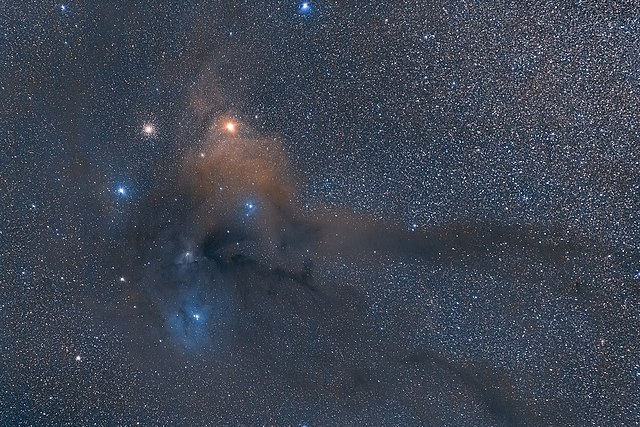
Six months from its launch date, this ambitious observing campaign's goal—to monitor 200 bright supernovae progenitors—is moving closer to reality. | By Bert Pablo
The SuperNova Early Warning System (SNEWs) is a collaboration between multiple universities and organizations including the AAVSO. If you are unfamiliar with the project, the goal is to gather comprehensive information about the next galactic supernova, with observations leading up to as well as coverage while it is taking place. The AAVSO side of the project is explained in detail here. Now that this project has been running for around six months, let’s see what progress has been made.
Figure 1. V data taken since start of Campaign in October on Campaign Star CE Tau.
Figure 2. V data taken since start of Campaign in October on Campaign Star BU Gem.
We are currently monitoring 192 stars. Currently, we have observations on 172 stars (89% of the total), an increase of 5% over just the past month. This is the first time in recent memory that the AAVSO has had such an ambitious target list for a single campaign, and from that standpoint we are doing quite well. However, our goal is to be at 100% by the end of the summer. To that end, for any interested parties, the table below lists the 20 stars which are still awaiting their first V observation. They tend to be quite bright, so please consider carefully.
| Star | Star |
| Sig CMa | NSV 13 |
| BE Cam | NSV 13784 |
| V0520 Car | V0412 Lac |
| NSV 4922 | V0424 Lac |
| NSV 18422 | eps Peg |
| V0602 Car | NS Pup |
| NSV 319 | alf Sco |
| V0766 Cen | V0450 Sct |
| V0772 Cen | ASAS J181343-1914.5 |
| V0419 Cep | lam Vel |
Just having an observation though is only the first step. Our goal is continuous coverage of these progenitor objects to really understand what is happening. So, what would “continuous coverage” look like? Since all of the progenitors are supergiants, their variations happen over long timescales, typically months or even years. So, as long as the campaign logs at least one observation a month on most of the stars we are doing okay. Ideal coverage would likely mean about ten points a month. This not only improves our understanding, but also helps validate the data present and ensuring that any observed variability is indeed real.
![]() Like this content? Want to see more? Support AAVSO’s day-to-day operational needs with a tax-deductible contribution.
Like this content? Want to see more? Support AAVSO’s day-to-day operational needs with a tax-deductible contribution.
So, what can you do as observers to push this project forward? I'm glad you asked!
- Starting July, we will be disseminating an observational review of every object in the campaign, the number of observations it received in both V and Visual as well as a status for the month based on the number of observations obtained from poor to excellent. Please check this and see what targets need attention and adjust your observing targets accordingly if you can.
- Submit your data to the AID in a timely manner. While you don't need to submit observations every day, if you could submit at least once every couple of weeks it will ensure our records are up to date and our tracking of each star is accurate. This allows each star is getting the attention it deserves.
- Check your observations before and after submission. There are times when data seems accurate, but it is not in line with other observers. There are also occasions where the measured magnitude could be significantly off from the target’s known range. These points are not always incorrect, but they do need to be checked to ensure their validity. If you do this on submission it makes our job at HQ much easier.
Thanks for reading. Please note two items of interest regarding this campaign. First there will be a SNEWS update meeting this coming Saturday, June 15th at 1 PM EDT (1700 UTC). This will delve into the details of what I discussed above. It is geared mainly towards observers who are interested in or have contributed to the SNEWS campaign. To join, click here at the allotted time.
Second, there will be a more general webinar on SNEWS on Saturday, July 13th. Details will be posted on the webinar page when they are available. Registration will be open soon.
Clear Skies!

